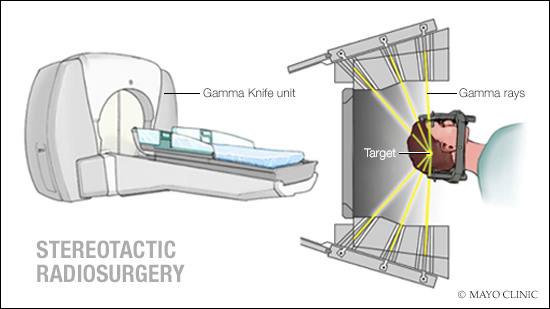-
Living With Cancer: Understanding stereotactic radiosurgery
 Stereotactic radiosurgery
Stereotactic radiosurgery
Stereotactic radiosurgery uses many precisely focused radiation beams to treat tumors and other problems in the brain, neck and other parts of the body. Each beam has little effect on the tissue it passes through, but a targeted dose of radiation is delivered to the site where all the beams intersect. The precision of stereotactic radiosurgery means there's minimal damage to the healthy surrounding tissues. In most cases, radiosurgery has a lower risk of side effects, compared with other types of traditional surgery or radiation therapy. Find out if this treatment might be right for you.
Oral cancer screening
Oral cancer screening is an examination performed by a dentist or other health care provider to look for signs of cancer or precancerous conditions in your mouth. Oral cancer screening detects mouth cancer or precancerous lesions that may lead to mouth cancer at an early stage — when cancer or lesions are easiest to remove and most likely to be cured. Here's what you need to know.
Heart cancer: Is there such a thing?
Heart cancer is extremely rare. Most cancers found in the heart have come from elsewhere in the body, including breast cancer, kidney cancer, lung cancer, leukemia, lymphoma and melanoma, among others. Learn more from Dr. Timothy Moynihan, a Mayo Clinic oncologist.







